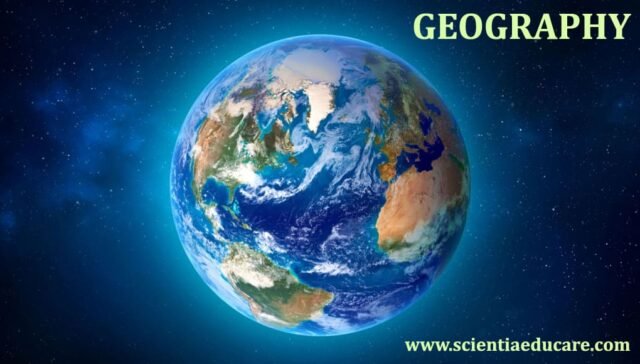Introduction to Geography
- “What is Geography? An Overview for Students”
- “Key Branches of Geography: Physical, Human, and Environmental”
- “Importance of Geography in Understanding the World”
- “Basic Geographic Terms Every Student Should Know”
- “How Geography Shapes Our Lives: An Introduction”
Physical Geography
- “Plate Tectonics: Understanding Earth’s Dynamic Crust”
- “The Water Cycle: Key Processes and Importance”
- “What Are Landforms? A Guide to Mountains, Valleys, and Plains”
- “Rivers of the World: Their Role in Geography and Civilization”
- “The Atmosphere: Layers, Composition, and Functions”
- “Understanding Climates and Weather Patterns”
- “Volcanoes: Types, Causes, and Impacts on the Environment”
- “Earthquakes: Causes, Effects, and Case Studies”
- “Deserts of the World: Formation and Characteristics”
- “Oceans and Seas: Exploring the Earth’s Water Bodies”
Human Geography
- “Population Geography: Trends, Patterns, and Challenges”
- “Urbanization: Its Impact on People and Places”
- “Cultural Geography: Understanding Human Diversity”
- “Economic Geography: Distribution of Resources and Industries”
- “What is Migration? Types and Causes Explained”
- “Globalization and Its Impact on Geography”
- “The Role of Agriculture in Shaping Human Geography”
- “Transportation Networks: Connecting People and Places”
- “Tourism Geography: Trends and Impacts on Destinations”
- “How Geography Influences Trade and Commerce”
Environmental Geography
- “Understanding Ecosystems: Structure and Function”
- “Biodiversity Hotspots Around the World”
- “Deforestation: Causes, Consequences, and Solutions”
- “Climate Change: Geographic Perspectives and Impacts”
- “Sustainable Development Goals and Geography”
- “Land Degradation and Desertification: Causes and Mitigation”
- “Renewable Energy Sources and Their Geographical Distribution”
- “Natural Disasters: Geographic Patterns and Risk Management”
- “The Role of Geography in Environmental Conservation”
- “Water Resource Management: Global Challenges and Solutions”
Cartography and Geospatial Technology
- “What is Cartography? The Art and Science of Mapping”
- “Understanding Map Projections and Their Importance”
- “Topographic Maps: How to Read and Interpret Them”
- “Introduction to Geographic Information Systems (GIS)”
- “The Role of Remote Sensing in Modern Geography”
- “GPS Technology: Revolutionizing Navigation and Mapping”
- “Thematic Maps: Types and Applications in Geography”
- “How Digital Cartography Has Changed Geography”
- “Map Scales and Symbols: A Beginner’s Guide”
- “Satellite Imagery: Insights for Geographic Studies”
World Geography
- “Continents of the World: Physical and Cultural Features”
- “Asia: A Continent of Diversity and Contrasts”
- “Africa: Geography, Resources, and Challenges”
- “Europe: Physical Features and Human Impact”
- “North America: Geographic Characteristics and Landscapes”
- “South America: The Role of the Amazon and Andes”
- “Australia and Oceania: Unique Geographies and Cultures”
- “Antarctica: The Frozen Continent and Its Importance”
- “Major Mountain Ranges of the World: Their Formation and Features”
- “The World’s Longest Rivers: Geographic Insights”
Geography of India
- “India’s Physical Geography: Key Features and Regions”
- “The Himalayas: Geography and Importance to India”
- “Major Rivers of India: Their Courses and Uses”
- “Indian Monsoons: A Geographic Perspective”
- “Peninsular Plateau: Its Role in India’s Geography”
- “Western and Eastern Ghats: Contrasts and Similarities”
- “India’s Coastal Plains and Islands: Key Features”
- “Natural Vegetation and Wildlife in India”
- “Agricultural Geography of India: Patterns and Practices”
- “Urban Geography of India: Challenges and Opportunities”
Regional Geography
- “Geography of the Arctic and Antarctic Regions”
- “Middle East: Geopolitical and Physical Features”
- “Geography of Sub-Saharan Africa: Challenges and Opportunities”
- “The Pacific Rim: A Geographical Overview”
- “South Asia: Geopolitical and Physical Features”
- “The Amazon Basin: World’s Largest Rainforest Region”
- “Sahara Desert: Geographical Characteristics and Human Adaptations”
- “The Alps: Europe’s Most Famous Mountain Range”
- “Great Lakes of North America: Formation and Significance”
- “Southeast Asia: Geography, Culture, and Trade”
Geography and Economy
- “Geography of Global Trade Routes: Past and Present”
- “Industrial Regions of the World: A Geographic Analysis”
- “Energy Resources and Their Geographic Distribution”
- “Agricultural Patterns and Geography of Food Production”
- “Mining and Mineral Resources: A Global Geographic Perspective”
- “The Role of Geography in Economic Development”
- “Fisheries Geography: Global Patterns and Challenges”
- “Forestry Geography: Managing Global Forest Resources”
- “Geography of Tourism: Economic and Environmental Impacts”
- “The Geography of Oil: Major Reserves and Production Centers”
Geographic Theories and Concepts
- “The Theory of Plate Tectonics: A Geographic Revolution”
- “Von Thünen’s Model of Agricultural Land Use”
- “Christaller’s Central Place Theory: Understanding Settlements”
- “Weber’s Theory of Industrial Location: A Geographic Approach”
- “Rostow’s Stages of Economic Growth: Geographic Implications”
- “The Concept of Spatial Interaction in Geography”
- “Geopolitics: The Role of Geography in International Relations”
- “Core and Periphery: A Global Geographic Perspective”
- “Environmental Determinism vs. Possibilism in Geography”
- “The Gravity Model of Spatial Interaction: Applications in Geography”
Miscellaneous Topics
- “Geography of Natural Hazards: Case Studies Around the World”
- “How Geography Influences Culture and Identity”
- “Gender and Geography: Exploring Spatial Inequalities”
- “The Role of Geography in Climate Action Plans”
- “How to Prepare for Geography Exams: Tips and Strategies”















I have been exploring for a little for any high quality articles or blog posts on this sort of area . Exploring in Yahoo I at last stumbled upon this web site. Reading this information So i’m happy to convey that I have a very good uncanny feeling I discovered just what I needed. I most certainly will make certain to don’t forget this website and give it a look regularly.